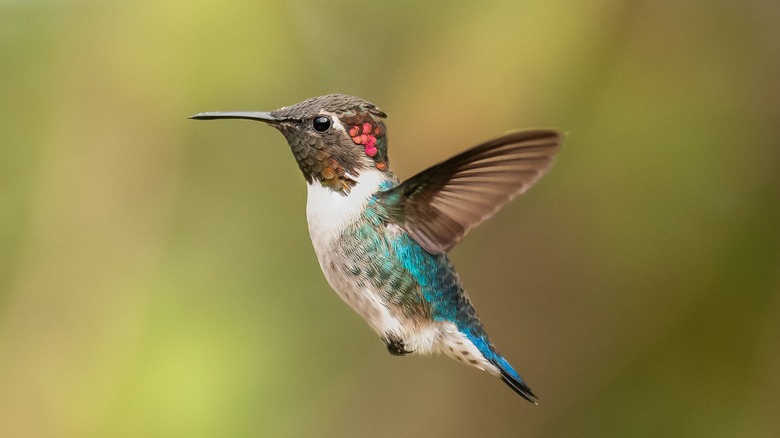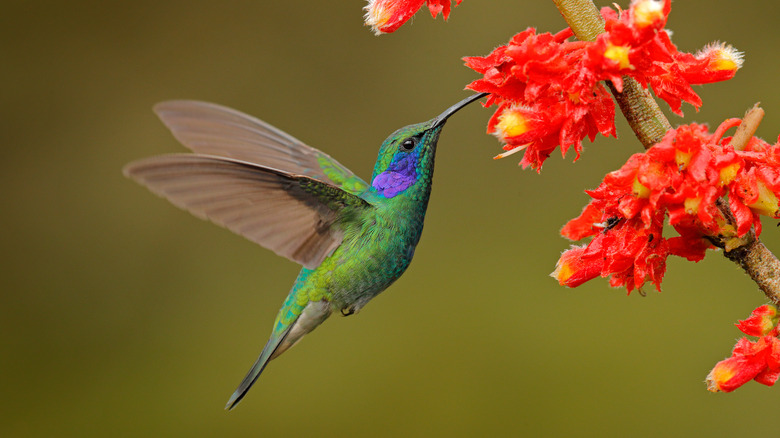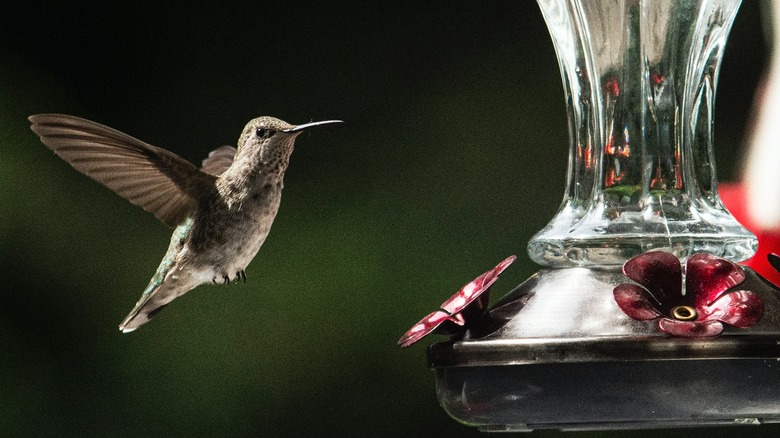The Color You Should Add To The Garden To Help Attract Hummingbirds
Hummingbirds, in general, are attracted to anything bright and bold. But whenever you see them feeding in a whirl of color, there's probably one shade that will pop into your brain first, and that color is red. Hummingbirds have complex color preferences, and while red is often associated with attracting them to your home, their preferences actually stretch beyond this hue. Factors like sweetness levels, seasonal variations, and geographic distribution all influence their color preferences for nectar-producing flowers. Studies have shown that red flowers tend to contain more nectar,
Yellow is not the hummingbird's most favorite color, but it's worth noting that high-contrast colors like black and white are also ranked low on their color preferences. In the bird community, white is commonly associated with warning signals, and many bird species utilize their white or light-colored feathers to exhibit aggression or territorial behavior toward neighboring competitors. But if you have a few white blooms scattered in your garden, there's no need to worry. If you have plenty of nectar rich flora around, they won't be too bothered by it.
Red is like a visual dinner bell
To hummingbirds, red means food. They recognize that red feeders and red flowers are likely to contain high quality nectar. Hummingbirds possess a unique visual system that allows them to perceive colors differently from humans. Their retina contains a denser concentration of cones, which are the specialized cells responsible for seeing colors. This increased cone density gives hummers a heightened sensitivity to colors, particularly those in the red to orange range of the color spectrum. Due to their enhanced color perception, these tiny birds see red more vividly than other colors. Red also shows up even more prominently against a green backdrop.
That being said, while hummingbirds tend to favor reds and oranges, their feeding habits are primarily guided by the availability of sweet, life sustaining nectar. So it goes without saying that if you're trying to get more visitations from these swift tiny fliers, make sure you plant an assortment of different colored blooms. These tiny flying acrobats will return to places where they've learned food is aplenty.
Stay away from artificial dyes
Hummingbirds have delicate systems, which is why it's important to provide them with proper nourishment that's free of artificial dyes and preservatives. While it's not completely verified, these tiny birds may be sensitive to the artificial additives and chemicals that are commonly found in mass marketed nectar. It's recommended to avoid nectar that contains red dyes FD&C #5 and FD&C #40. Instead, look for ingredients like carmine, annatto, or hibiscus, since they're derived from natural sources and are considered safe for hummers. Choosing natural, dye-free nectar not only promotes their well-being, but also mimics true nectar that they feed on out in the wild.
Another option is to create your own hummingbird nectar, which uses basic white sugar and water. As previously mentioned, it doesn't need to be dyed red. Keep in mind that your feeder should be cleaned on a regular basis to prevent bacteria growth, and the nectar should be changed out every three to five days. In warmer climates or during peak hummer season, you'll want to clean and refill your feeder more frequently.


